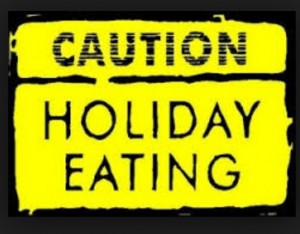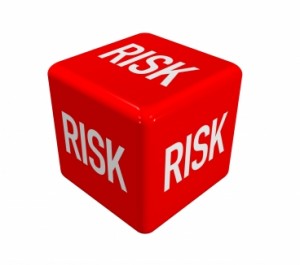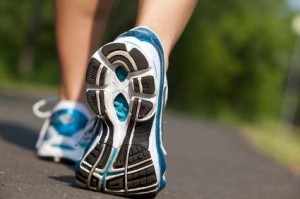 1. Trim back the trimmings. Go all out and deck the halls with boughs of holly, glitter, and lights, but when it comes to holiday food, accessorize with care. To shave calories, go easy when adding nuts, cheese, cream sauces, gravy, butter, and whipped cream — additions that don’t add much to the meal, but can add plenty to your waistline. Trim calories wherever you can so you leave the party feeling satisfied, but not stuffed, recommends Carolyn O’Neil, MS, RD, author of The Dish on Eating Healthy and Being Fabulous.
1. Trim back the trimmings. Go all out and deck the halls with boughs of holly, glitter, and lights, but when it comes to holiday food, accessorize with care. To shave calories, go easy when adding nuts, cheese, cream sauces, gravy, butter, and whipped cream — additions that don’t add much to the meal, but can add plenty to your waistline. Trim calories wherever you can so you leave the party feeling satisfied, but not stuffed, recommends Carolyn O’Neil, MS, RD, author of The Dish on Eating Healthy and Being Fabulous.
2. Wear snug clothes and keep one hand busy. When you wear snug-fitting attire, chances are you’ll be too busy holding in your stomach to overeat. While you stand around looking posh in your holiday finery, hold a drink in your dominant hand so it won’t be so easy to grab food, recommends obesity expert Cathy Nonas, MS, RD.
3. Chew gum. When you don’t want to eat, pop a piece of sugarless gum into your mouth. This works well when you’re cooking or when you’re trying not to dive into the buffet, says Nonas.
4. Be a food snob. If you don’t love it, don’t eat it, says American Dietetic Association spokeswoman Melinda Johnson, MS, RD. Scan the buffet for foods you truly treasure and skip the everyday dishes that are available all year long. And don’t think it’s your responsibility to sample everything on the buffet. Go ahead and indulge in your personal holiday favorites, then find a seat and, slowly and mindfully, savor every mouthful.
5. No skipping meals. Always eat normally on the day of a party. “People who skip meals to save up calories tend to overeat everything in sight once they get there,” says Katherine Tallmadge, MA, RD, author of Diet Simple. “Eating sensibly throughout the day will take the edge off the appetite and empower a bit of restraint.” Start with a nourishing breakfast, have a light lunch, then a small snack or salad shortly before the event.
6. Check it out. First things first. When you arrive at the party, grab a sparkling water with a twist, and wait at least 30 minutes before eating. This will give you time to relax, get comfortable in your surroundings, and survey your food choices on the buffet before diving in, says Tallmadge. A buffet is an invitation to eat all you can, and unless you carefully scrutinize it and make wise choices, you’re likely to overeat.
7. Add fun and games. Cynthia Sass, MPH, MA, RD, co-author of Your Diet Is Driving Me Crazy, proposes taking the focus off food and getting family and friends more active during holiday parties. Think horseshoes, badminton, sledding, ice skating, or building snowmen. Indoors, try a spirited game of charades, or rent an instructional dance video followed by a dance-off. “The best parties include dancing, so why not make dancing after eating a new holiday tradition for a great form of fun and recreation?” asks David Katz, MD, MPH, author of The Flavor Point Diet.
8. Alternate alcohol with nonalcoholic beverages. Alcoholic drinks are loaded with calories — especially holiday favorites like eggnog. “Cut your alcohol calories in half by alternating water or seltzer between alcoholic beverages,” Katz advises.
9. Skip the appetizers. “Eschew the appetizers rather than chewing on them,” says Katz. If you need a little nibble before the meal, go for the veggies, fruit, salsa, or a small handful of nuts.
10. Limit the variety. Brian Wansink, PhD, author of Mindless Eating, suggests putting only two items on your plate when you go to the food table. Return as many times as you like, but only take two items each time. “Variety stimulates appetite, and if you limit your choices to just a few items and stick with these, it will be easier to control than eating a little bit of 20 different dishes,” agrees Katz.
via Top 10 Holiday Diet Tips of All Time.
 According to the National Institutes of Health (NIH), all adults — even seemingly healthy ones — should undergo regular physical examinations at their healthcare provider’s recommended frequency. The purposes of these exams are to:
According to the National Institutes of Health (NIH), all adults — even seemingly healthy ones — should undergo regular physical examinations at their healthcare provider’s recommended frequency. The purposes of these exams are to:








